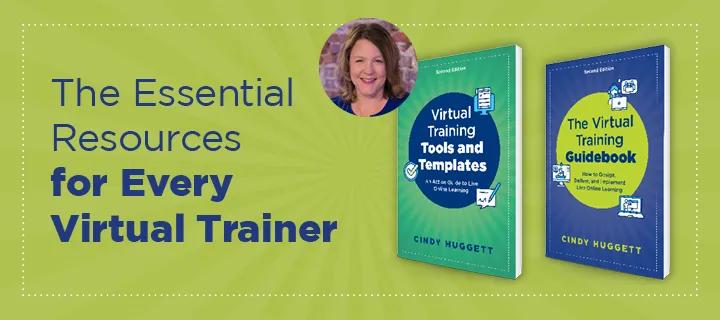ATD Blog
Three Truths About Virtual Training
Here are three current truths about virtual training along with specific corresponding actions you can take to realize learning results. learning results.
Mon Sep 16 2024

It’s been more than four years since many organizations abruptly moved most of their training programs online. Virtual meetings are commonplace, and most people have spent hours in virtual classrooms. Designing and facilitating virtual programs are now expected competencies for talent development professionals. Virtual training has settled into a comfortable place in most organizational learning strategies.
Yet several aspects of virtual training continue to be a struggle. Remote participants battle with the competing distractions that surround them. Designers aren’t always sure what learning activities fit best in virtual classrooms. Facilitators are challenged to keep up with rapidly changing virtual platform technologies. These issues, and more, can keep virtual training programs from reaching their full potential of realizing measurable business results.
Therefore, every organization needs to review their virtual training strategy in light of three essential truths. These virtual training facts will help you fine tune your approach to online learning and provide a path forward to success. They will help you evaluate what’s currently working, what’s not, and what could be improved.
Here are three current truths about virtual training along with specific corresponding actions you can take to realize learning results.
1. Learner engagement is the first step toward on-the-job application.
Remote participants are surrounded by distractions and are tempted to multitask throughout a virtual class. But if they aren’t paying attention, then they aren’t learning, and if they aren’t learning, then they won’t be able to apply new knowledge and skills back on the job. So, while the sole purpose of virtual training is not learner engagement, it is the first step toward the end goal of application.
Engagement starts by setting clear expectations with participants in advance with an accurate, detailed program description and by letting participants know the WIIFM (“what’s in it for me?”) to help them recognize the importance of adjusting their attention priorities.
Advance communication messages should explain details, such as “In this event, you’ll be asked to click, type, and talk with your peers.” By letting the audience know ahead of time that they will be asked to actively participate, the likelihood of them doing so will drastically increase.
Finally, the virtual program should use highly relevant examples and scenarios that place participants in real-world, on-the-job scenarios. A focus on application leads to increased attention and, therefore, better results.
Action: Conduct an “engagement audit” to see if your program clearly sets learner expectations for active participation and offers relevant content sparking greater attention that translates into on-the-job application.
2. Virtual training is the right learning solution, sometimes.
A weak virtual training program design with lecture-heavy presentations results in distracted, passive participants. On the flip side, effective virtual training engages participants in activities, provides practice opportunities, and leads to improved on-the-job skills. It’s supposed to be a social experience with participant interaction and collaboration throughout the program.
If your virtual training programs lean heavily on demonstration or presentation, then reconsider if virtual is the best modality for learning. Would a recorded video suffice? Or an asynchronous e-learning program be better? Just because it can be in a virtual classroom, doesn’t mean it should.
Use virtual training as a learning solution when facilitators are needed and when conversation adds value. Plan a highly interactive virtual class that starts with an activity and uses the platform tools throughout. For example, open with a poll question, and then have participants introduce themselves in chat (even before the facilitator’s introduction). Keep the dialogue flowing, taking advantage of the synchronous setting.
If your instructional designers need upskilling in designing for the virtual classroom, now is the time to for it. Likewise, equip virtual trainers with how to facilitate instead of just how to present. Teach them to focus on the audience, not be afraid of silence, and think of the experience as a dialogue instead of a monologue.
Action: Conduct a “modality audit” to see if the virtual classroom is the best choice for this learning content. If it is the right choice, then design it for engagement that leads to learning outcomes.
3. Not all online platforms are created equal.
Virtual classes have different feature requirements than virtual meetings. They need a robust toolset that makes learning easy. Online training goes beyond sharing screens by making use of collaborative whiteboards, small group breakout rooms, thought-provoking polls, and team-based discussions. Yet many organizations still use meeting tools, instead of investing in platforms designed for interactive training. These meeting platforms may work well for everyday use but stop short of creating learning experiences.
Think of it this way: There are several types of physical meeting rooms, such as board rooms, auditoriums, and training rooms. Each room type has unique features that make it ideal for certain types of meetings. You can make any of them work for any type of meeting, but you are more likely to choose the room style that’s most conducive to your meeting outcomes. It’s the same with virtual training.
Well-designed virtual classes don’t use these tools for the sake of interactivity. Instead, you use them to create engaging learning experiences that lead to on-the-job results. You use them to enable conversation and connection between participants, which is a primary hallmark of effective virtual training.
Action: Conduct a “technology audit” to see if your virtual classroom or meeting platform meets the needs of your training programs. Ask your facilitators if the current platform is ideal for learning without workarounds. Find out how much extra effort is required to create a seamless learning experience. And research to see if your virtual training program of choice integrates with your organization’s meeting platforms.
The common theme between these three truths is participant engagement, which stems from three key elements: 1) an interactive design that uses robust virtual classroom tools, 2) skilled facilitators who add value to the learning experience by focusing on relevant application of the lessons learned, and 3) prepared, attentive participants who understand the benefits of their active engagement in the learning program. The combination of these three things contribute to positive learning results. Use them as your guidepost for successful virtual training in 2024 and beyond.
For your complete guide to virtual training, including tools, tips, questionnaires, templates, and more, check out The Virtual Training Guidebook: How to Design, Deliver, and Implement Live Online Learning, Second Edition.

